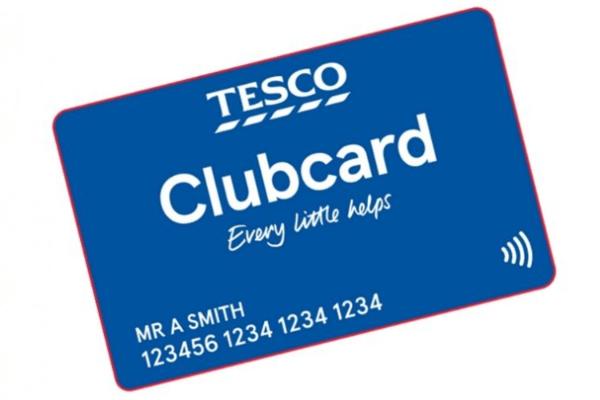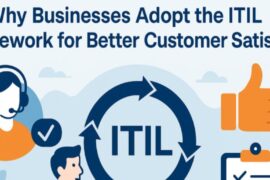Retaining customers is crucial for a business, it guarantees customer satisfaction, repeat purchases, and long-term success. Companies should prioritise retaining existing customers over acquiring new ones, as customer acquisition can be up to 25 times more expensive and demands additional resources, time and effort.
Effective customer retention strategies are the backbone of a sustainable business. By building strong relationships and consistently delivering value, companies can create loyal customers who not only make repeat purchases but also become brand advocates. Therefore, this creates higher profitability due to the saved costs and resources, and the increased repeat purchases.
In the following sections, proven customer retention strategies are explored, to help aid your business in thriving within a competitive market.
Exceptional Customer Service
Great customer service leads to high customer satisfaction, which in turn fosters repeat purchases and enhances customer retention. Many customers will switch to a competitor due to poor customer service, so it’s crucial to get it right.
Addressing customer enquiries and issues promptly shows a commitment to resolving problems, building trust and brand image. This can be done by having a dedicated team member(s) available throughout the day, or even incorporating an AI chatbot or outsourcing enquiries overseas for out of office hours.
To prevent customers having problems in the first place and needing help, answers can already be provided. For example, including a Frequently Asked Questions (FAQs) page, and providing as many resources as possible at the customer’s disposal, such as educational videos and descriptions.
Customers interact with businesses on a variety of platforms, such as different social media, apps and websites. Therefore, support should be on every platform that the customer is on to increase the customer journey and convenience.
Reaching out to customers after purchasing products or services shows commitment to the customer beyond the sale, fostering a sense of care and loyalty. Emails can be sent afterwards to ask for feedback, incase processes need amending, and to thank customers for their purchase.
To implement these strategies effectively, training staff to deliver superior and consistent customer service is essential. Regular training programs or meetings should be held to ensure this standard is maintained company-wide. Providing pre-determined answers to common questions can also help ensure consistency and reliability in customer interactions.
Loyalty Programs and Rewards
Customer’s willingness to switch to a competitor will be seriously reduced if there are high switching costs. Loyalty programs and rewards massively influence retention due to exceptional value obtained when sticking with the company.
These perks leverage psychological principles of positive reinforcement, as individuals repeat an action when rewarded, therefore customers will repeat purchase when rewarded. Human nature drives customer retention.
Loyalty programs offer rewards such as points, discounts, or exclusive deals to customers who purchase products/ services, or who have simply made an account. They may then feel obliged to purchase due to the exclusive offer they received, that can’t be missed, encouraging impulse buying.
To keep customers over a long period of time, beyond encouraging an extra purchase, reward schemes can be introduced. If a certain amount of money is spent, or a certain number of products/ services is ordered, a new perk can be unlocked. Consumers are unlikely to switch to a competitor if they have points to use up, as they want to get great value.
Other incentives can be utilised, such as member-only benefits, and offering money/ discounts for referring a friend to the company.
Tesco is a great example of an exceptional customer loyalty scheme, with their ‘Tesco Clubcard’. Members earn points for every pound spent, which can be converted into vouchers for groceries and fuel, and other exclusive rewards. Members also save money when using the clubcard in-store and online.

Regular Engagement
Consistently posting on social media and regularly emailing customers/ potential customers is crucial for staying top of mind and maintaining an ongoing connection with your audience. When individuals are ready to make a purchase, they’ll tend to think of a company initially, so it’s important to assert your business’ presence to allow for consumers to choose your company when making that purchase decision.
Social Media Posting
Social media can be leveraged to create a sense of community amongst customers. Polls, questionnaires, resharing user generated content (UGC) and posts, and responding to messages are all ways of encouraging engagement, therefore strengthening the customer and company’s bond.
Engaging visuals are more likely to be reshared, liked and commented on, companies with higher followers and engagement tend to have higher credibility, positively influencing customer retention. Exclusive social media discounts and giveaways further encourage users to stay connected with your brand.
Email Newsletters
Regular email engagement boosts customer retention through personalised communication, as user’s names and other personal data is commonly used within emails. This ensures relevant and valuable messages, tailored to each customer.
Email newsletters are a great way of incentivising continued engagement and loyalty, as they tend to contain product updates, educational content, early access and discounts that will most likely be missed if they aren’t subscribed to the mailing list.
Automated emails are a simple, yet effective way of enhancing customer experience. Triggered emails, such as welcome and post-purchase follow-ups, keep the brand familiar to the customer, making them more likely to choose the business when making a purchase decision.
Reusable Business Model

Reusable products and services are a great way of keeping customers retained, as it will be difficult to look to competitors. For example, reusable toothbrushes need the correct reusable head replacement, some coffee machines need a certain brand of coffee pod, and some razors need certain replaceable heads.
This reusability model forces customer retention as it’s difficult for consumers to switch products as they’ve already committed, and feel obliged to keep buying the compatible products.
Customers also commonly perceive reusable products as greater value, as they offer long-term benefits and savings. Eco-conscious consumers concerned about sustainability may opt for these types of reusable products, who by default will have to make repeated purchases to keep using the products.
Exhibition stand design and build contractor Quadrant2Design’s core values are centred around reusable and sustainable exhibition stands. The majority of their clients re-exhibit with them, reusing their stand at future trade shows due to money saving benefits, sustainability benefits, high value and quality, unlimited graphic design and more.
Conclusion
In conclusion, retaining customers is not just beneficial but essential for any business aiming for long-term success. The cost-effectiveness and resource efficiency of customer retention far outweigh the expenses associated with acquiring new customers. By focusing on proven retention strategies such as exceptional customer service, loyalty programs, regular engagement, and reusable business models, companies can build strong, lasting relationships with their customers. These strategies not only ensure repeat purchases but also turn customers into brand advocates, further enhancing profitability and market presence.
Implementing these strategies effectively requires a commitment to understanding and meeting customer needs consistently. Businesses must invest in training their staff, leveraging technology for personalised communication, and designing products and services that align with customer values. By doing so, companies can create a loyal customer base that is resistant to competitors and continues to contribute to the business’s growth and success over time.































